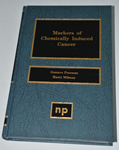All Articles
Accident Investigation & Reconstruction
Healthcare Facilities - Hospitals
Addiction Issues & Substance Abuse
HVAC - Heating, Ventilation, Air Conditioning
Alternative Dispute Resolution (ADR)
Insurance
Animals
Investigation & Surveillance
Artificial Intelligence (AI) / Machine Learning (ML)
Land Use
Attorney Fees
Law Enforcement
Audio Forensics
Laws & Procedures
Bacteria - Fungus - Mold Investigation
Life Expectancy - Life Care Planning
Biokinetics
Logistics - Reverse Logistics
Blockchain Information
Medical - Medicine
Child Welfare
Medicine
Crime Scene Investigation
Meditation
Digital Forensics
Metallurgy
Economics
Mining
Education & Schools
Nonprofit Organizations
Electrical - Electrocution
Patents
Employment
Police Practices & Procedures
Energy - Utilities
Politics
Engineering
Professional Malpractice
Family Issues
Public Speaking
Finance
Real Estate
Food & Beverage
Recreation & Sports
Forensic Analysis
Securities
Forensics
Supply Chain Management
Hazardous Materials
Yoga
More...

PLANTS-TREES-PAGE ARTICLES MAIN PAGE
. Contact Us if you are interested in having your work published on our website and linked to your Profile(s).
All Articles
Accident Investigation & Reconstruction
Industrial Hygiene and Safety
Accident Prevention & Safety
Land Mapping - Surveying - Zoning
Accounting
Machinery
Alcohol, Tobacco & Other Drugs
Marketing
Appraisal & Valuation
Meditation
Artificial Intelligence (AI) / Machine Learning (ML)
Mining
Attorney Fees
Obstetrics - Gynecology (OBGYN)
Branding - Brand Management
Oil & Gas
Business Consulting
OSHA
Child Welfare
Patents
Construction
Pharmacy & Pharmacology
Cosmetology: Hair / Makeup
Plastic / Reconstructive / Cosmetic Surgery
Counseling
Politics
Damages
Pools and Spas (Recreational)
Digital / Crypto Currency
Premises Liability
Documentation Examination & Analysis
Psychology
Elder Abuse
Radiology
Elevators - Escalator - Automatic Doors
Real Estate
Employment
Risk Management
Environment
Search Engine Optimization (SEO)
Ethics / Ethical Duties
Security
Eyewitness Testimony
Sexual Abuse - Molestation - Harassment
Feng Shui
Slip, Trip & Fall
Fires & Explosions
Terrorism - Homeland Security
Forensic Psychiatry
Warnings & Labels
More...
Featured Articles
There are no active articles here at this time. Please use the search bar, try another category, or contact us if you would like to contribute an article.
This Article is unavailable. Contact Us
Search articles by title, description, author etc.
Sort Featured Articles
Featured resources
Markers of Chemically Induced Cancer
by Harry A. Milman, PhD, Gustave Freeman (Eds.)
Governing Artificial Intelligence...
by Chris Draper, et al
China and the Middle East: Venturing...
by James M. Dorsey, PhD
Follow us










